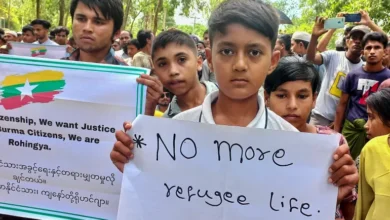Israel, civilian deaths and the question of proportionality

On Saturday, Israel justified the killing of more than 100 Palestinians sheltering at a school in Gaza City by claiming the attack was targeted at 20 Hamas and Palestinian Islamic Jihad fighters. Last month, the killing of at least 90 Palestinians in al-Mawasi was also justified by the Israelis, who said that the attack targeted two Hamas commanders, including Mohammed Deif, the longtime leader of the Qassam Brigades.
Zooming out, since the beginning of its war, Israel has killed almost 40,000 Palestinians in Gaza, wounding tens of thousands more. While occasionally disputing the death toll, Israel has made it clear that it views its destruction of Gaza, and the civilians killed, as being warranted in return for the destruction of Hamas, following the group’s attack on Israel, which killed an estimated 1,139 people.
Leaving aside whether these Palestinian fighters were present at the sites Israel attacks (and Hamas denies that it operates from civilian facilities, and that Deif is even dead), the mass killings raise the question of proportionality, and how many civilians Israel is prepared to kill in order to assassinate one Hamas figure.
There is no formula for proportionality under international humanitarian law (IHL). The International Committee of the Red Cross (ICRC), however, says that under the principle of proportionality, an attack that may cause incidental loss of civilian life, injury or damage to civilian objects that is “excessive in relation to the concrete and direct military advantage anticipated, is prohibited”.
Israel’s military strategically uses disproportionate violence, analysts told Al Jazeera.
“Israel’s military has failed both to secure the release of the hostages and to deal a ‘death blow’ to Hamas,” Tariq Kenney-Shawa, a policy fellow at Al-Shabaka, a Palestinian policy network, said. “Massive attacks … give the Israeli government and military something to point to as a ‘win’ if they result in the death of Hamas leaders and large numbers of civilians because it fits into Israel’s wider strategy of deterrence through unparalleled destruction.”
The ‘Dahiyeh doctrine’
In Israel’s 2006 war with Hezbollah in Lebanon, the Israeli military deployed a strategy of disproportionate retaliation by targeting neighbourhoods and destroying civilian infrastructure as a means of putting pressure on their enemies. This strategy came to be called the “Dahiyeh doctrine”.
But can it work?
“All natives will resist colonists as long as they have the slightest hope of ridding themselves of the colonisers,” Hani Awad, a researcher at the Arab Center for Research and Policy Studies, told Al Jazeera. That steadfastness means the Israeli military believes it is “necessary to respond to any act of resistance with formidable, deadly, and devastating power until the natives lose hope and accept the settler colonial claims and will.”Since the war on Gaza began, the Israeli military has flattened homes, schools, universities, hospitals and cultural landmarks in what has been termed “genocide” and “domicide”. More than 55 percent of buildings were destroyed by Israel between October 7 and May 31, according to a United Nations report.
Israel’s military claims the destruction since has been necessary to target Hamas figures in Gaza.
“Regardless of Israel’s claims about Hamas leaders being present in targeted areas, it is unacceptable to kill civilians, target ambulances, and target civil defence personnel,” Ihab Maharmeh, a researcher at the Arab Center for Research and Policy Studies in Doha, told Al Jazeera.
The concept of proportionality in conducting warfare has also changed for Israel since October 7. Israeli military sources told +972 Magazine in April that soldiers were permitted to kill as many as 20 civilians in order to kill a junior Palestinian fighter. That number could be in the hundreds for a Hamas commander, the sources said, adding that as an official policy, it was unprecedented in Israel or recent US military history.
“I’d find it hard for any international humanitarian lawyer to say that’s an acceptable application of proportionality,” said Shane Darcy, a professor at the Irish Centre for Human Rights at the University of Galway, when asked about the numbers reported by +972. “Those are possible war crimes.”










